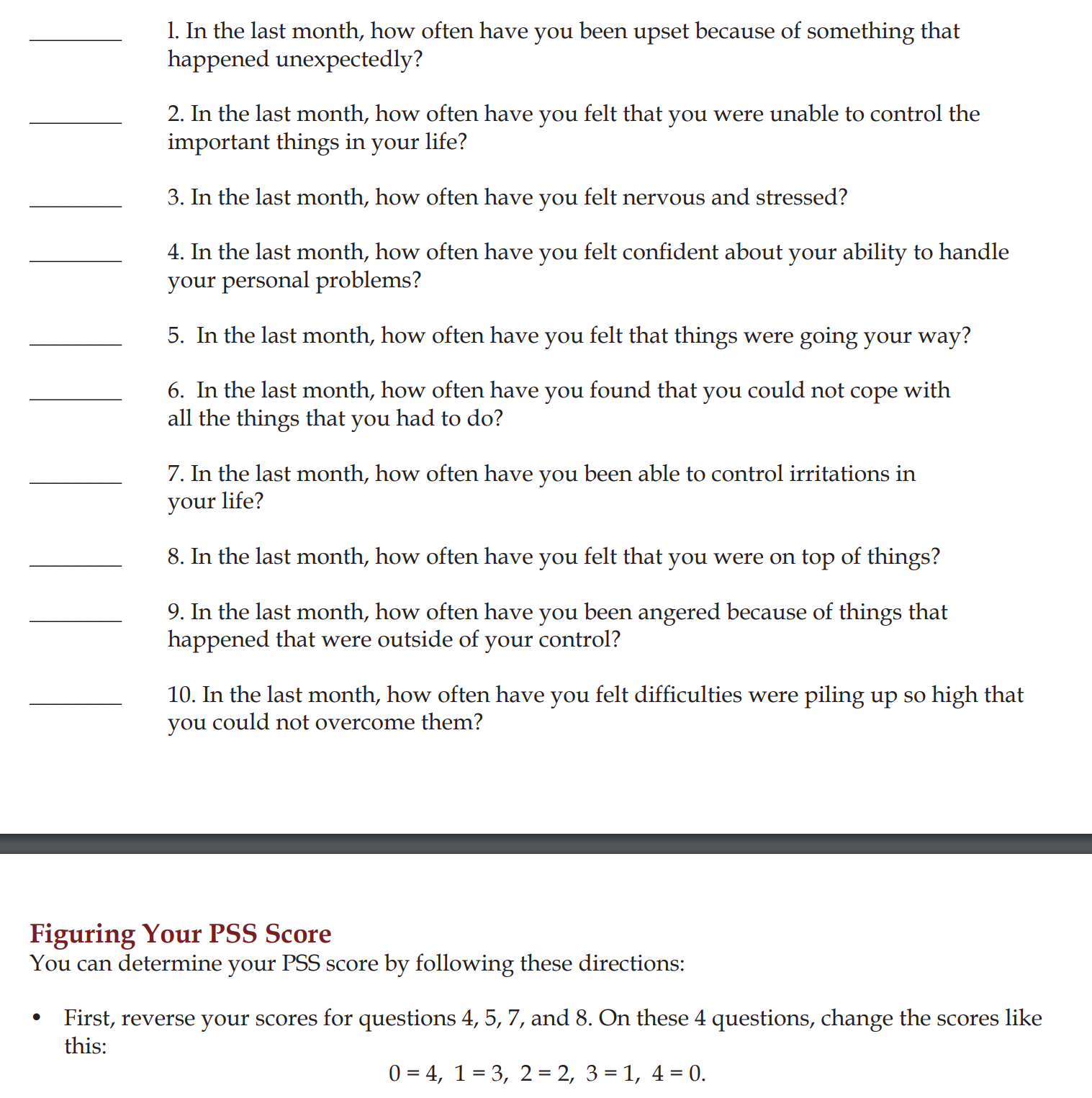Cohen 1983 - A Global Measure of Perceived Stress
Cohen, S., Kamarck, T., & Mermelstein, R. (1983). A global measure of perceived stress. Journal of health and social behavior, 385-396.
Summary
The Perceived Stress Scale (PSS) is an extremely popular tool for measuring subjective perceptions of stress. Previous stress measurements relied on objective counts of specific life events during a certain time period. The PSS allows for various, subjective reactions across subjects, though the subjects might be experiencing the same stimuli (which might even be a life event used in previous methods). This allows for subjects to experience events differently, based on the “personal and contextual factors” of the event. Generally, the life event count measures used a very wide longitudinal sample (e.g., 6 months), while the PSS samples only the last month.
The PSS is meant to measure the degree to which events feel “unpredictable, uncontrollable, and overloading,” though the items aren’t broken out into subscales, nor was factor analysis used in item selection. The original 14-item measure was later revised (see Cohen and Williamson 1988 - “Perceived Stress in a Probability Sample of the United States”) into a 10-item measure that had better psychometrics than the 14-item version. There is also a 4-item version, which has significantly poorer psychometrics.
Application
A useful tool for assessing general stress. Longitudinally stable at 2 days, less so at 6 weeks (though still acceptable).
